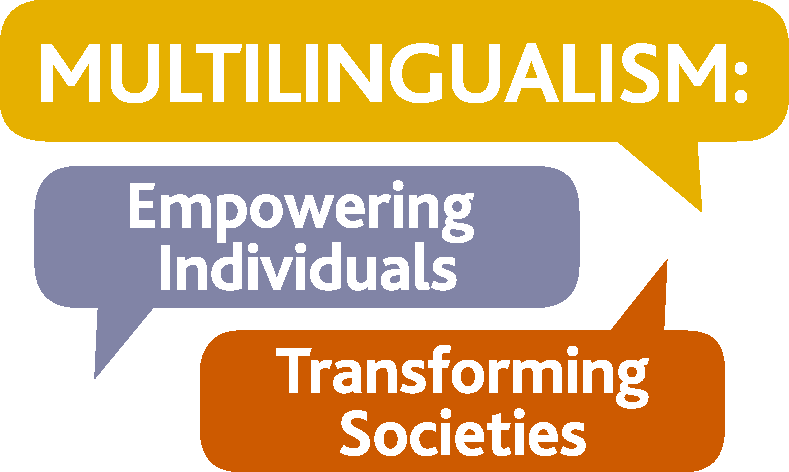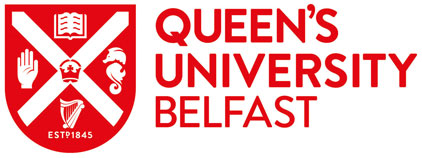Why is it important to differentiate multilingual children and children with Developmental Language Disorder (DLD)?
Language abilities develop very quickly during childhood, showing particular variability at a preschool age, where children’s language is subject to the effect of both genetic and environmental factors. Much research has tried to identify the core sources of language variability in early language learning and the best possible environment for supporting this process. Some arguments proposed to account for this variability are based on impaired cognitive abilities such as working memory or attention skills: this is the case, for example, for children with Developmental Language Disorder, DLD, or Attention Deficit Hyperactivity Disorder, ADHD. Other studies attribute the source of poor language ability in some preschool children to insufficient input from a particular language, such as in cases of children growing up in an environment with different linguistic characteristics, including multilingual children or those who speak a minority language.
Despite the different approaches adopted in research, it is reported in many studies that the linguistic abilities of many children who are learning a second language appear similar to those of monolingual children of the same age with a DLD. These similarities can cause misidentification of underlying causes, with a risk of both under- and over-diagnoses of a language disorder in multilingual children, and an overall lack of confidence on the part of both carers and teachers regarding how to deal with learning multiple languages at preschool stage. This problem is compounded by the fact that the tasks typically used in the diagnostic procedure are generally standardised based on monolingual speakers, which can result in a severe disadvantage for multilingual children, especially for those who have not reached a mature level of competence in the language of testing.
Although the traditional approach to language development attempts to group children into two categories – typically versus atypically developing – global mobility and the consequent increase in multilingual speakers have led to a growth in the observation of variation in language abilities in non-clinical populations, and particularly in children with different degrees of exposure to a second language. Studies of multilingual children are now crucial to better understand the process of language development and the various factors involved in growing up with more than one language.
At the age of 5–6 years, which marks the beginning of Key Stage 1 in the UK, approximately two children in every Year 1 classroom of 30 children will have a clinically significant language disorder of currently unknown cause that adversely impacts learning. Many children may appear to catch up with peers but continue to be weak in the area of language skills, with lifelong consequences. About 7% of children experience persistent language difficulties: their spoken language is often ungrammatical, with many errors such as omission of the third person -s in English (Mary cook it rather than Mary cooks it) or the use of overly short sentences.
Children learning another language can show a delay in the same areas as children with DLD. This is especially the case at early stages, within the first year of exposure to the new language; it does not usually persist after more than two years of consistent exposure to the second language, although for some languages more time could be required. It is important to observe that in children learning another language, a constant increase of correct grammatical features is observed. During this period of adaptation to the new linguistic context, the language initially used in the home is often abandoned by families, who may prefer the new language and (wrongly) perceive that continuing to use the home language has a delaying effect on learning the new language. However, giving up the home language is not advantageous: on the contrary, it can generate a series of negative consequences for family communication, as well as for children’s multilingual development. More importantly, there is no evidence that speaking the home language is the cause of developmental or linguistic delays in multilingual children, or that it can hinder their linguistic and cognitive development. On the contrary, current research points to the benefits of learning and using more than one language (Bird, Genesee, & Verhoeven 2016; Uljarević et al 2016). Importantly, these benefits have been found to extend also to children suffering from specific language and learning disabilities, such as dyslexia. Multilingual children thrive linguistically when the learning environment is rich enough to support multiple languages.
Evidence from research
Due to the perceived similarities between the abilities of bilingual children and children with DLD, it is important to define the range of variation attested in bilingual children and to understand the factors that differentiate the two groups. To date, we know far less about children with more than two languages, with or without DLD, and for this reason we will use the term “bilingual children” in this section.
Different aspects of language can offer different insights into a child’s linguistic abilities. First, it is necessary to consider the developmental stages in learning a given language.
Vocabulary: One aspect that is often a source of worry for carers and teachers of bilingual children concerns their vocabulary, which in the early stages is typically smaller in each language than that of monolingual children. While it is wise to underline that the whole vocabulary of bilinguals across languages is very likely to be larger than that of monolinguals, it is also important to remark that it develops in a way that is guided by the context in which they use each language. It is thus perfectly natural that a bilingual child has a larger academic vocabulary in the language used at school, and a more developed domestic one in the language used at home. Therefore, vocabulary cannot be considered a reliable measure for evaluating the language competence of bilinguals.
Grammar: Instead, it can be more useful to analyse bilingual children’s abilities in specific areas of grammar, in relation to the so-called clinical markers of language disorders, which are areas in which linguistically impaired children typically show ongoing difficulties. Clinical markers are elements of language consistently reported as problematic in children with DLD. A clinical marker is specific to a language or a family of languages, and sometimes to the age of the child. It is reliable in that it both captures the difficulties experienced by children with DLD and excludes those with no DLD.
In English, for instance, the formation of verb tenses (i.e. regular past tense verbs such as jumped versus irregular verbs such as saw) is severely compromised in children with DLD, while aspectual markers (e.g. have in I jumped versus I have jumped) are typically spared. A good clinical marker for Romance languages such as Italian and French is the production of certain third-person pronouns, e.g. Mary lo cucina, “Mary it cooks”. To replace a noun phrase like “the dog”, English uses a pronoun that appears in the same position as the original phrase, i.e. after the verb: I see THE DOG > I see IT. Languages like Italian also uses pronouns here, but they commonly appear before the verb rather than after it: Vedo IL CANE > LO vedo. Research has focused specifically on clinical markers to verify how bilingual children cope with structures that are problematic for children with DLD, and to determine whether these markers can be used to differentiate bilingual children suffering and not suffering from DLD. In the Italian example, for instance, it has been shown that bilingual children, despite displaying some difficulties in comparison with monolingual unimpaired children, can be distinguished from DLD children, especially by looking at the type of errors committed (Vender et al. 2016).
Non-word and sentence repetition: A clinical marker that has proven to be reliable for identifying language disorders in multiple languages, in both monolingual and bilingual children, is a task in which children are asked to repeat made-up words, known as non-word repetition. This task is particularly challenging for children with DLD across different languages and seems not to be related to length of exposure to the languages; in contrast, bilinguals tend to perform similarly to their monolingual peers. Similarly, difficulty with repeating sentences is considered a good indicator of the presence of DLD in early second language learners and bilingual children.
Our suggestion for identifying language disorders in bilinguals more carefully and precisely is thus to assess the child’s ability with language-specific markers, such as verb endings in English and pronouns in Romance languages, in combination with non-word or sentence repetition tasks. DLD will manifest in both the languages of a bilingual child, thus it would be idea to test both languages whenever possible. Under-performance in only one of the languages may indeed be more indicative of difference in language abilities than of a disorder.
Amount of exposure: Another aspect that must be considered when evaluating the linguistic behaviour of bilingual children concerns their amount of exposure to the second language: children with longer exposure to the L2 typically perform better in comparison with children with shorter exposure. With respect to the production of pronouns in Italian, for instance, it has been shown that ability correlates with how much exposure to the language children have received, and over what length of time this has occurred: specifically, children with more intensive and longer exposure typically do better than those with lower exposure (Vender et al. 2016). Moreover, the difficulties shown by bilinguals tend to disappear as their competence increases: children with 5 years of exposure to Italian, for instance, have been found to perform as accurately as native speakers in this test. Similar results were reported in a group of Turkish-English bilinguals. To make a diagnosis of a child’s language ability, the clinical markers proposed for the specific language should be investigated in relation to exposure to the language: differences become clear among bilingual children with at least two years’ exposure to the second language.
Expected challenges
Measuring clinical markers: It is important to know the clinical markers in the language at stake. As argued above, clinical markers can vary across different languages, depending on the characteristics of each language. Therefore, it is crucial to know which aspects of a language are typically compromised in children with DLD and generally vulnerable during language development. If multilingual and early second language learners have already been tested using these clinical markers, it will be important to know how multilingual children typically perform with respect to the same markers and to consider testing the child in both languages, if possible.
Measuring exposure: There are several aspects of a child’s language experience that must be considered: the amount of exposure and the length of exposure to the language. In this respect, the traditional index for measuring length of exposure (calculated simply by subtracting the child’s age of first exposure to the second language from her chronological age) is not sufficiently precise. A more reliable index is the cumulative length of exposure, a measure that considers a richer set of variables to determine the actual exposure to the L2 over time. If the traditional index provides a purely indicative measure of the years of L2 exposure of the child, the cumulative index aims to give a much more precise and complete indication, taking into account the quantity of exposure to each of the languages at stake, and their actual use in the family, at school and elsewhere, considering that this can undergo significant changes over the years. Exposure to a language can indeed vary notably in relation to its actual use, both in the present and in the past. To delineate a precise picture of the child’s linguistic history, a number of qualitative and quantitative variables need to be considered, including the languages spoken to the child by the various people that interact with them, but also the languages spoken by the child to these people (see Vender et al. 2016 for a questionnaire that follows this principle).
Linguistic structure: Another aspect to consider carefully with multilingual children is the structures of the languages concerned and how these relate to each other. Possible interference effects from the L1 to the L2 are often caused by a feature of one language being absent in the other language, or differently realised across the two languages. Some linguistic aspects of L2s are more difficult to learn, requiring more time in relation with distance from the home language (for example, forming verbs in English is particularly difficult for L1 Chinese speakers – Paradis, Schneider & Sorenson Duncan 2012), as well as forms that are frequently omitted because they are not present in the home language (for example, articles such as the and a are often omitted in English by children who speak languages that do not have them; see Paradis, Schneider & Sorenson Duncan, 2012).
Best practice(s)
Supporting language learning in multilingual communities is essential to ensure optimal language development. The family and the child’s environment (the specific circumstances of language use over time) need to be supported, and correct information should be disseminated about the benefits of continuing to use the home language. Information centres such as Bilingualism Matters (see Resources below), which aim to establish connections between researchers and wider society, provide important resources that can enable carers, teachers and health professionals to make decisions about bilingualism based on facts rather than misconceptions. The message that bilingualism will not hamper the linguistic behaviour of their children, even if they suffer from language impairments, needs to be clearly delivered and supported by good practices. To summarise the approach developed in this policy paper, it is important to:
- Track language development in relation to how much the child is exposed to the different languages, considering overall length of exposure in a cumulative format that takes into account the child’s different experiences with each language;
- Gather information on both languages, particularly on the home language, to differentiate probable effects of language disorders from areas that are merely vulnerable due to structural distance between the languages and normal developmental processes;
- Support home languages as the main resource for consistent language input at home and for the development of language identity;
- Be aware that if a child is affected by DLD, all languages will be affected, although it will manifest itself in language-specific ways – different aspects of grammar are vulnerable in different languages (verb endings in English, but certain pronouns in Italian, Spanish or French).
What can be done? Some recommendations
It is important to note that any sign of creativity in children’s language use, even if divergent from adult language, is always a positive sign in terms of language development. Many of the grammatical errors a child produces are attempts to explore the language system, as happens, for instance, when a child uses an irregular verb in a regular form (e.g. goed from go). In children with more than one language, some instances of divergence can be caused by the contact between the two languages: for example, using words from two languages in the same sentence (il gatto is drinking latte, “the cat is drinking milk”), is generally not a sign of confusion, but one of developing language ability, and thus should not be discouraged. It is generally important to encourage the use of both languages and not to correct children when this does not conform with standard language. Children learn a language via positive evidence from other speakers, which includes listening and receiving sufficient opportunities to practise the language. Corrections, on the other hand, have been reported by several studies as non-effective tools for language learning.
It is essential, in all circumstances, not to abandon the home language. This is a source of richness in particular for many subtle and crucial aspects of linguistic ability, such as narrative skills, reasoning with language, the ability to interact in a conversation, and of course communication within the family. The home language is also an essential medium for developing self-awareness and cultural identity, and as such it needs to remain part of the child’s life experience.
Resources
Bilingualism Matters: http://www.bilingualism-matters.ppls.ed.ac.uk
Advice for Speech and Language Therapists from the Centre for Literacy and Multilingualism at Reading: http://www.reading.ac.uk/celm/media/1125/b18587-celm-multilingualism-therapists-hmt-v5b.pdf
Bilingualism London Clinical Excellence Network: A group of speech and language therapists with specialist clinical interest and experience in working with children and families from diverse cultural and linguistic backgrounds: https://www.bilingualismcen.com
Naldic, national subject association for English as an additional language: https://naldic.org.uk
Naplic, professionals supporting language and communication development: https://www.naplic.org.uk
National Literacy Trust: https://www.literacytrust.org.uk
Royal College of Speech and Language Therapists: https://www.rcslt.org/clinical_resources/bilingualism/bilingualism_overview
Further reading
Bird, E. K. R., Genesee, F. & Verhoeven, L. (2016). Bilingualism in children with developmental disorders: A narrative review. Journal of Communication Disorders, 63, 1–14.
Garraffa, M., Guasti, M.T., Marinis, T. & Morgan, G. (2018). Editorial: Language acquisition in diverse linguistic, social and cognitive circumstances. Frontiers in Psychology, 9, 1807.
Paradis, J., Schneider, P. & Sorenson Duncan, T. (2012). Discriminating children with language impairment among English-language learners from diverse first-language backgrounds. Journal of Speech, Language and Hearing Research, 56(3), 971–981.
Uljarević, M., Katsos, N., Hudry, K. & Gibson, J. L. (2016). Practitioner review: Multilingualism and neurodevelopmental disorders – an overview of recent research and discussion of clinical implications. Journal of Child Psychology and Psychiatry, 57(11), 1205–1217.
Vender, M., Garraffa, M., Sorace, A. & Guasti, M.T. (2016). How early L2 children perform on Italian clinical markers of SLI: A study of clitic production and nonword repetition. Clinical Linguistics and Phonetics, 30(2), 150–169.






